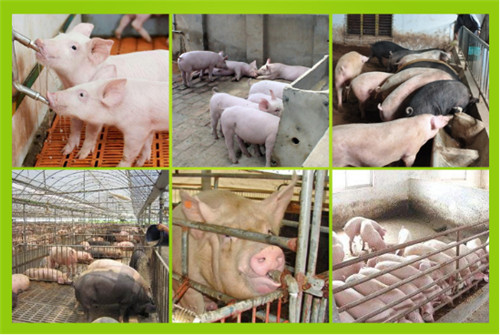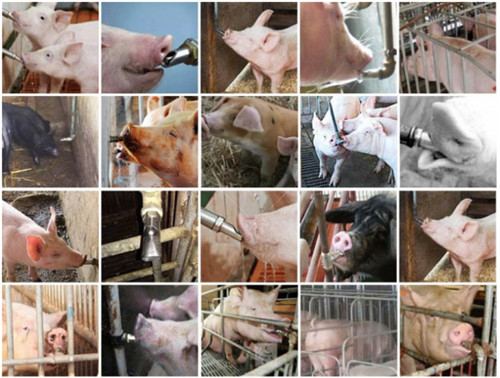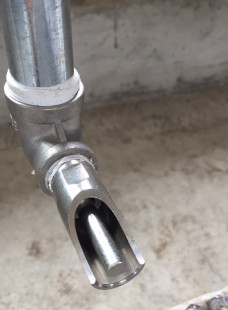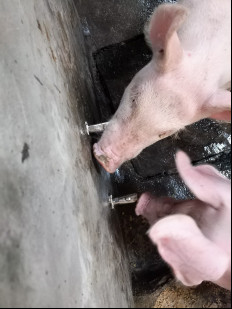WATER SUPPLY TO PIGS
We’re at that time of the year when pigs can be significantly impacted because of the hot weather. These impacts will be even more severe if water becomes restricted.
This article has useful information and is a checklist of ‘must dos’ to ensure the quantity and quality of water available to your pigs is adequate.
Don’t ignore water
A poor water supply can lead to:
• Slower growth rate of pigs,
• More urinary infections in sows,
• Lower fed intake in lactating sows, leading to a loss in body condition.
If pigs are deprived of water altogether
(e.g. if water supply is inadvertently turned off), they will die within a few days.
The first signs of water deprivation (so-called ‘salt poisoning’) are thirst and constipation, followed by intermittent convulsions.
Affected animals may wander aimlessly and appear to be blind and deaf. Most die within a few days. On the other hand, unnecessary wastage of water will lead to a significant increase in production costs.
Overall water usage for a piggery
Research has identified the amount of water required for each class of pig (see table below).
| Litres/day | |
| Weaners | 3* |
| Growers | 5 |
| Finishers | 6 |
| Dry Sows | 11 |
| Lactating Sows | 17 |
These figures are useful for calculating the amount of medication to add to water if using water medication or when sizing water troughs.
Using these figures, you can also estimate the likely minimum requirement for water in a farrowing-to- finish piggery (see following table).
| Litres/sow place/day* | |
| Drinking water only* | 55 litres/sow/day |
| Wash down water | 20 litres/sow/day |
| Total water | 75 litres/sow/day |

Important
Lactating sows typically require 17 litres of water per day, and up to 25 litres.
With a flow rate of 1.0 litres per minute, and allowing for spillage, the sow will require about 25 minutes to consume 17 litres.
Lactating sows are only prepared to spend a limited amount of time drinking, so a low flow rate will result in them consuming less water than they need and subsequently reduce feed intake.
Delivery of water
Water may be presented to pigs through nipple, bowl or trough waterer.
The great thing with a bowl or trough is that you can actually see that water is available; with a nipple drinker you have to climb over the fence and actually check….don’t rely on the drips from the nipple to tell you it’s working!
Most conventional piggeries have nipple drinkers rather than bowls or troughs, usually because bowls or troughs tend to be fouled which means more cleaning and less palatable water for pigs until it’s done. The exception to this is water supply for outdoor sows tends to be in troughs. Trough sizes are not important but as a guide, a dimension of 1800mm x 600mm x 200mm provides adequate water storage while still being sufficiently portable when they need to be relocated.
Pigs only tend to spend a short time a day drinking, so the way the water is presented is absolutely crucial. If they don’t drink enough water they won’t eat sufficient feed, which impacts on the welfare and productivity of the pig.

Younger pigs such as weaner tend to be a bit timid in regards to drinkers, especially when first weaned. If they receive a blast from a nipple drinker when they first try to attach, that will put them off drinking. Older pigs tend to be more eager, so a faster rate will mean all pigs will have good access to drinkers. A slower rate will result in aggressive behavior and the submissive pigs will miss out as the bullies will tend to “hog” the drinkers.
A point which is quite critical with the industry moving to group housing of gestating sows.
Lactating sows tend to prefer a good flow rate as they are only prepared to spend a limited amount of time drinking, so a low flow rate will result in them consuming less water than they require, which in turn affects milk production and weaning weights.
One nipple drinker per 10 pigs is preferable for weaner pigs, whereas one nipple per 12-15 pigs tends to be the norm for growing pigs.
Recommended flow rates for nipple drinkers
| Minimum flow rates(litres/minutes) | |
| Lactating sows | 2 |
| Dry sows and boars | 1 |
| Growers/ finishers | 1 |
| Weaners | 0.5 |
Ensure the nipple drinkers have sufficient flow without being wasteful.
• Measure and record flow rates of all drinkers at least once per year.
• Check water flow from all drinkers between batches of pigs.
• Check water flow, (especially during summer when water is in high demand) and drinkers at end of water line
How to check flow rates?
You will need:
• Marked water container or 500 ml container
• Timer (watch)
• Record (for future reference)
Fill 500 ml container from the drinker and record the time taken to fill the container.
Flow rate (ml/min) = 500 x 60 Time (sec)


Post time: Nov-05-2020
